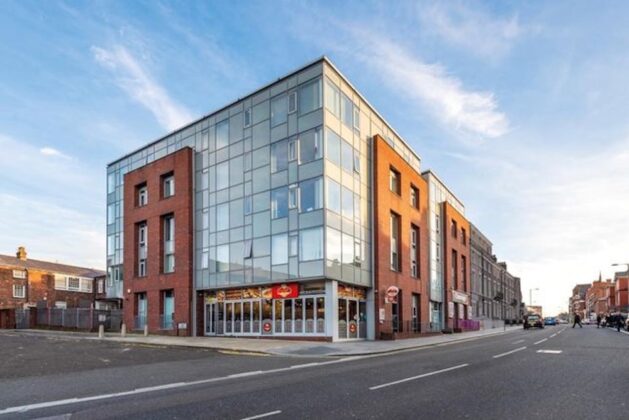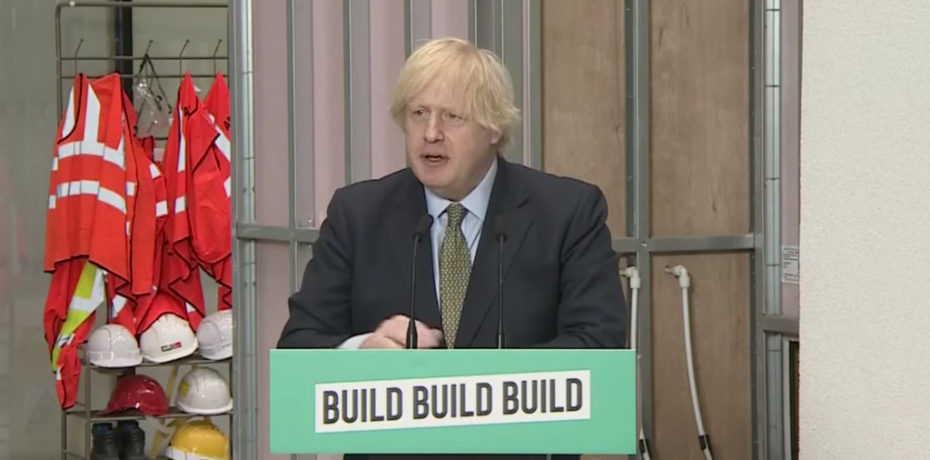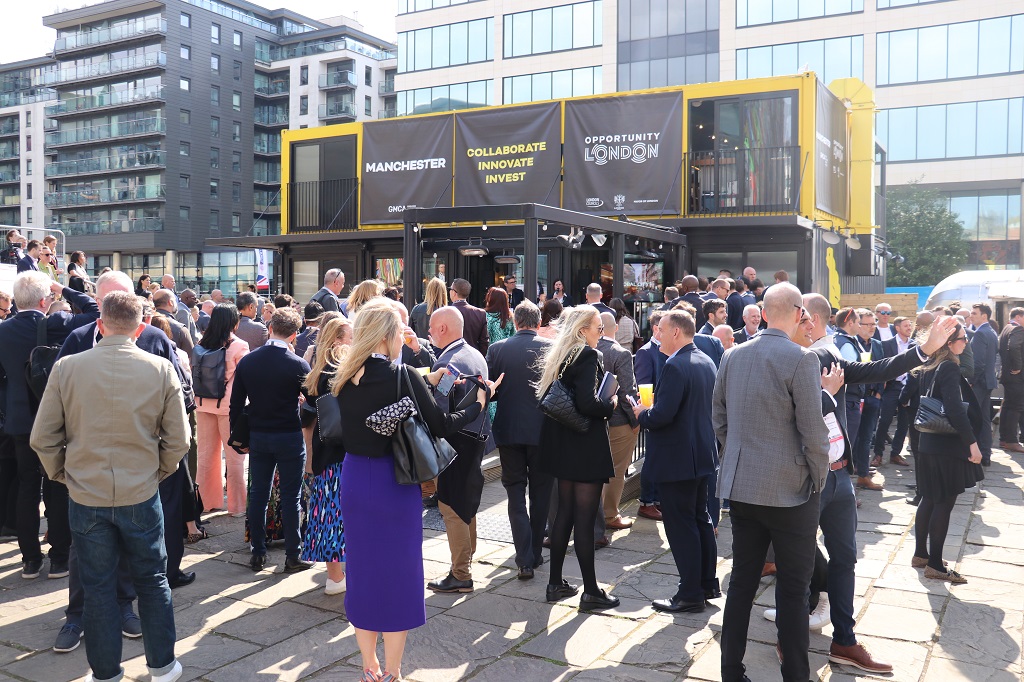The Subplot
The Subplot | PRS not BTR, who gets levelled up
Welcome to The Subplot, your regular slice of commentary on the North West business and property market from Place North West.
THIS WEEK
- PRS in the spotlight: a £200m fundraising promises to shake up the North West private rented sector
- Levelling Up: a battle of ideas has begun ahead of the Government’s winter white paper. It matters who wins.

RESIDENTIAL RETHINK

PRS yes, BTR not so much
The UK Residential REIT is aiming to raise £200m to invest in mid-priced private rental housing in Liverpool, Manchester and a handful of other Northern locations. The reit has turned its face firmly against trendy build-to-rent. Why?
Last week UK Residential REIT (URES), a closed-ended real estate fund, announced it was targeting proceeds of £150m from an initial public offering on the main market of the London Stock Exchange, plus an issue of up to £50m to help fund seed assets. The idea is simple: this is BTR without the two-year building programme, or the glittery amenities. It will take unloved buildings, invest in some clever refurbishment, and produce a well-managed, mid-price rented block. This kind of corporate play is still a novelty in the private rented sector world, where just 4% is owned by institutions, and the other 96% by mum and dad, retail investors, or small-time operators.
Testing ground
Liverpool (at Mount Pleasant, above) and Manchester account for a hefty chunk of URES’ 1,200-unit (£145m) Seed portfolio. It plans to buy lots more as part of a £440m pipeline of near-term acquisition opportunities. Which is fascinating, for two reasons. First, the North West in general, and Manchester and Liverpool in particular, have been proving grounds for BTR. The two cities showed (what some doubted) that pricey BTR could work outside the unique dynamics of London. The reit’s idea is (effectively) to gamble that something that feels like BTR can be turned into a mass-market, mid-priced enterprise.
Scalable proposition
The new reit is also interesting because it is an attempt to probe some of the weaknesses of the city centre BTR model, weaknesses that mean it can never grow very big. In particular, large upfront land and construction costs, long lead-in times (lots of dead money), and high rents. That translates into lower yields, which means investors don’t get much bang for their buck.
Gan explains
So how does this work? Subplot spoke to Kee Gan, chief investment officer of L1 Capital UK Property Advisors, which is managing the reit. He explains that its approach means low upfront costs (no need to build things), it is immediately income producing, it is not an experiment in a new sector, and the tenants are not young professionals squeezing every drop out of their income. Rather, they are making long-term commitments paying lowish rents they can easily afford. If there was a definition of granular defensive income – today’s investment Holy Grail – this is it.
Basic is best
“The median rent in our portfolio is about £800 a month, say £200 a week, that it is the mass market,” says Gan. “Not low, not social housing, and it is not BTR because this is not about paying for gyms and saunas.” Because tenants are paying modest rents (about 20% to 25% of disposable income) they are not financially stretched, and can weather storms. So this is a defensive asset. During the pandemic the Seed Portfolio secured 96% rent collection in 2020 and 95% average occupancy in the past two years. In the unlikely event a tenant leaves, finding a replacement is not hard. And unlike BTR, the physical asset is under (not over) valued: the purchase price for the portfolio is at a 29% discount to the rebuild or replacement costs.
Maths matters
The low capital value really matters, and makes for another sharp contrast with BTR, as Gan points out. The fact is that North West housing is mostly quite cheap. “House prices haven’t risen anywhere near as fast in Manchester or Sheffield as they have in the South. Compare prices today with the 2007 peak and you see, in real terms, basically 13 years with no growth. Capital values are affordable, so yields higher.” As a result the new reit is targeting a healthy 10% net return for shareholders. Compare this with the 4.25% yield you might see on a good Manchester BTR block (Subplot, 16 February).
Scope
“BTR isn’t providing for the majority, or even the top 5-10% of renters, they are targeting the top 1%, and they need to do that because it is so expensive to build,” says Gan. The aim here is to meet the needs of a group larger than the 1%.
Preston, maybe
But don’t expect this model to spread far outside the big cities – at least, not in the current format. Gan is keen to buy more in Manchester and Liverpool, creating 200- to-300-bed clusters where he can begin to claim economies of scale on management and maintenance costs. Preston could also be on the list (“If the opportunity came up, we’d be interested, because of the strength of the rental market,” he says). But the aim isn’t to be everywhere. “We want more scale in fewer cities,” Gan says.
Conclusion: BTR claims the glamour, but if this experiment succeeds, PRS could claim the crown.
DRIVING THE WEEK
Levelling Up, or down?
Are our cities in peril, thanks to Covid-19? Or are the big cities – Manchester in particular – villains sucking the life out of surrounding towns? Debate has begun ahead of publication of this winter’s Levelling Up white paper.
Manchester, Liverpool, Salford, Preston…for the best part of two decades, UK regional policy has been about growing powerful city regions that can drive local economies. If you believe this, and most property people do, any damage done to cities is super-significant: if they go down, whole regions go down with them. The alternative view is that growth in big cities does no good (or not enough good, or may do some harm) to the towns that surround them. As work on the Government’s Levelling Up white paper begins, this battle of ideas really matters. Two new research projects are adding to the debate.
Cities in peril
This idea is heavily promoted by the cities themselves, and has a lot of property industry buy-in. The loss of city centre leisure and amenity jobs, itself caused in part by the surge in homeworking, has left visible scarring. The Core Cities and Key Cities groups of major conurbations (Manchester and Liverpool in the Core group; Salford, Preston, Lancaster, Carlisle and Blackpool in the Key group) has published a lengthy rundown of everything that’s wrong and needs putting right.
Zoomshock
The key claim is that ‘Zoomshock’ – meaning the rise in homeworking via Zoom and Teams – has laid waste to cities. The claim is that “urban centres lost 229,000 workers to residential and rural areas during the pandemic, but a city-first approach to Levelling Up could grow the economy by £89bn and pull 3.3 million people out of poverty.” All of the Core Cities experienced large outflows of workers, the groups claim: an estimated 56,000 in Manchester alone. Liverpool had a net outflow of 16,000, Preston 11,000. This is because the Core Cities contain high densities of office-based workers capable of homeworking. Carlisle and Blackpool more or less stood still. “Across Core Cities there were outflows of 968,000 and inflows of 739,000, equating to a net outflow of 229,000 workers,” their manifesto says. But this is not what the research shows.
What?
This is not a calculation of jobs actually lost or anything like it, as those in Manchester who put the data together for the cities groups are happy to admit. It is a worst-case scenario showing how bad things could get. This is based on an academic study from December 2020 that explains the output of a model and what it presents is the maximalist case. In other words, if everyone who could work from home did, and did it for the maximum number of hours they could, given their own circumstances, this is what would happen. That is, crucially, not the same as counting people. It is also, crucially, the biggest number you could come up with, not necessarily the most realistic. You can find the research here.
No change
Beware. It is unclear why this maximalist number would be any bigger in 2021 than in, say 2019: the maximum amount of homeworking is still pretty much the maximum because regardless of whether it is 2019 or 2021, waiters and nurses still can’t work from home as easily as HR managers or surveyors. Also, this model is mostly based on survey evidence from 2017, 2018 and 2019.
The expert explains
Daniel Timms is senior consultant at Manchester-based Metrodynamics, and helped the research see the light of day for the Key and Core Cities groups. “This is a model, and the researchers would probably acknowledge that the effects are exaggerated because not everyone who can work at home all the time probably does so, so this represents the extreme position,” he says. Asked how different 2019 estimates would have looked, Timms says: “It would have been very much the same … it is just that, as a matter of conjecture, we think more people actually do more homeworking today.”
Surprise!
So… this data is not data, it is a projection, and it is not evidence of a catastrophe. What it shows is that some cities are more vulnerable to homeworking because they have a higher proportion of people who could work from home a lot of the time, and others have fewer or they would work from home for less hours. And the bigger and richer the city, the more likely it is to have lots of potential homeworkers who do a lot of homeworking. In those places the shock to (poorer, younger) people employed in amenity industries is that much more profound, and the relocation of people and resources more noticeable. So it hurts Manchester more than, say, Carlisle. We knew all this, didn’t we?
Remember the pandemic
And there’s also this: homeworking meant less demand for city centre amenities, but don’t forget that they were mostly closed in any case because the Government made it illegal to use them. You can’t ask homeworking Zoom calls to do all the explanatory heavy lifting. The original research makes some valuable points about the suburban neighbourhoods that now have more workers in them, though how profound or long term that effect is remains to be seen. But all in all you get the feeling someone dreamed up the word Zoomshock and was quite pleased with themselves (the authors use the word 115 times). The research is an attempt to give it legs.
Boris’s agenda
On the other hand, maybe the big cities are draining the life out of neighbouring towns and that needs mending? The idea certainly fits with a certain kind of Boris-meets-Brexit analysis of what’s wrong in the ‘left behind’ areas, and another raft of research is coming that might show it is plausible. Work is now beginning on a study from the University of Sheffield looking at the centripetal effects of regeneration. Instead of pushing wealth out of the city to the city-region, they plan to ask if maybe it is sucking life out of the surrounding city-region?
Brexit Britain
“The aim of the project is to analyse the sustainability and inclusiveness of property-led growth and the Build to Rent model in particular, in central Manchester, including an assessment of how economies and diseconomies of agglomeration impact upon both Manchester and outlying towns such as Bolton and Wigan,” the call for evidence says.
Needles, haystacks
This will surprise a lot of property people, because it would be hard to claim that Manchester city centre BTR – a small slice of the PRS market, and one aimed at a niche of wealthy young professionals and empty-nesters – was likely to be a measurable engine of growth for Wigan, now or ever. Remember, for all its headline-grabbing, BTR is a super-niche product. It is a microscopically small part of the housing market: latest BPF/Savills figures show just 40,000 completions in the entire UK, with 35,000 under construction (about a quarter in the North West). There are 24.4m UK housing units, so UK-wide we’re talking about 0.3%. BTR is big on noise but economically trivial.
And yet
That’s not to say that there isn’t an economic impact, and the Greater Manchester Combined Authority has done research showing how a wider PRS offer would be beneficial in retaining young professionals. You can read its 2015 findings here. However, the economic effect of a few thousand pricey BTR units will be diffuse, muffled by a lot of social and economic background noise, and pinning down anything as certain as ‘cause’ and ‘effect’ will be tough, especially if you’re looking for your effects as far off as Bolton or Wigan.
The old excuse
On property-led city-focused growth, the researchers might be on stronger ground. Professor Adam Leaver, leading the research team, explains: “This project is investigating the assumptions around agglomeration economics on city-first property-led regeneration, asking if it will trickle down, or spread out, in a centrifugal way. Anecdotally we can’t see that, and maybe we are seeing the opposite which is centripetal, pulling skills into the central core. BTR is part of a wider strategy that assumes if you build lots of property it pulls in skills and creates market possibilities, which lead to productivity gains that spread out into the region.”
Nevertheless
Property people will want to debate a lot of what Leaver suggests. But that said, trickle-down economics is a rotten idea. It means the poorest have to wait longest for economic rewards. Often the rewards tap is turned off (by recession, boom and bust) long before anything reaches them. In so far as the idea of city-focused property-led regeneration relies on some form of trickle-down thinking, it needs a big hard kick. But trickle-down isn’t the whole story. Tax-takes and consumer spending, demand- and supply-side interventions, and a raft of less tangible inputs and outputs, make up the rest. In three years’ time, when the Sheffield team reports, we’ll see how close they got to finding them.
Conclusion: the battle of ideas has begun. It matters who wins.
The Subplot is brought to you in association with Cratus and Bruntwood Works.






You see a lot of extrapolation from London to Manchester – a few anecdotal observations: Many London workers (especially with families) have brutal and expensive commutes; those that live within Greater London often have great amenity within their ‘manor’, and there was a lot of hot desking going on under the surface even before the pandemic. Manchester’s offer relative to its hinterland feels stronger, also lots of signs that the GM towns have ridden on the coat tails of Manchester Agglomeration.
By Rich X
An excellent assessment of the city versus towns situation.
No mention of people and / or sustainability and how ESG investment is set to re-shape our regional and sub-regional towns. Check out 15 minute neighbourhoods, which are set to change the investment landscape away from cities and back to where people work rest and play.
Your property audience might not agree with me but your regeneration audience might.
And I don’t know where Rich X gets his ‘signs that the GM towns have ridden on the coat tails of Manchester Agglomeration. When was the last time he immersed himself in Ashton, Bolton, Wigan or Rochdale?
By Mike Riddell
Re the loss of workers in the city centres… I think you will find a lot of what is published around this area – and indeed cities themselves to be highly dubious and often politically motivated. For example, the ONS and Centre for Cities think tank do not included Liverpool’s docks as part of the city! Both have different definitions for the city even though they purportedly use the same criteria. Wolverhampton is counted as a separate city for Birmingham whereas Salford in Manchester is not, even though both are part of the primary urban area. Both quote stats for the ‘city’ of Birkenhead when actually they are stats for the Wirral (and Birkenhead is most definitely not a city). In reports, city region areas versus city centre areas will be conflated depending whether one wishes to make something look good or bad!
By Chris